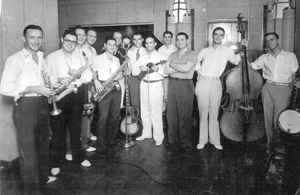In country music, the Bakersfield Sound is a distinctive and influential subgenre that emerged in the 1950s. Spearheaded by musicians such as Buck Owens, this unique musical style gained recognition for its raw and rebellious edge. But before Buck Owens became synonymous with the Bakersfield Sound, several key contributors laid the groundwork for this revolutionary movement in American music.
The Origins:
To understand the genesis of the Bakersfield Sound, we must delve into the social and musical landscape of Bakersfield, California, in the mid-20th century. Unlike Nashville, the capital of country music then, Bakersfield was a vibrant and growing agricultural hub attracting numerous migrants, including those displaced by the Dust Bowl. These migrants brought their love for traditional country music, creating a melting pot of diverse influences.
The Migration Factor:
The influx of migrants from Oklahoma, Texas, and other southern states was pivotal in shaping the Bakersfield Sound. These individuals, mainly farmers seeking better opportunities, brought a deep-rooted connection to country music. They formed close-knit communities where they would gather for social events, often featuring live music performances. The traditional country tunes from their hometowns blended with newfound influences, setting the stage for a unique sound to emerge.
The Western Swing Influence:
Western swing music, popularized by Bob Wills and his Texas Playboys, significantly shaped the Bakersfield Sound. Western swing combined traditional country music with elements of jazz and big band sounds. This fusion resonated with musicians in Bakersfield, who began incorporating swing rhythms and amplified instruments into their performances. Western swing's upbeat and danceable nature caught on quickly, laying the foundation for the energetic and dancehall-friendly sound defining the Bakersfield Sound.
The Honky-Tonk Era:
The honky-tonk movement that swept the nation in the 1940s and 1950s further fueled the rise of the Bakersfield Sound. Artists such as Hank Williams, Lefty Frizzell, and Merle Haggard captivated audiences with their heartfelt lyrics and twangy instrumentation. Bakersfield musicians drew inspiration from these honky-tonk pioneers, crafting songs that reflected the working-class struggles, heartaches, and joys experienced by their local communities.
The Legacy of Maddox Brothers and Rose:
Before Buck Owens rose to fame, the Maddox Brothers and Rose played an integral part in shaping the Bakersfield Sound. The Maddox family, led by brothers Fred, Cal, Cliff, Don, and Rose Maddox, brought an electrifying energy to their performances. They blended country, bluegrass, and boogie-woogie elements, creating a lively and dynamic style that resonated with audiences. Their influence extended beyond their music, as they also provided a platform for upcoming musicians in Bakersfield through their radio show and record label.
While Buck Owens is often associated with the Bakersfield Sound, it is essential to recognize the rich tapestry of influences that laid the groundwork for this revolutionary movement. The migration of country music-loving farmers, the fusion of western swing, the impact of honky-tonk, and the trailblazing efforts of the Maddox Brothers and Rose all played a significant role in shaping the Bakersfield Sound. Buck Owens, along with other artists like Merle Haggard, would later take the sound to new heights, popularizing it on a national scale. The Bakersfield Sound, with its gritty authenticity and rebellious spirit, continues to inspire country musicians to this day, leaving an indelible mark on the rich tapestry of American music history.
















0 comments:
Post a Comment